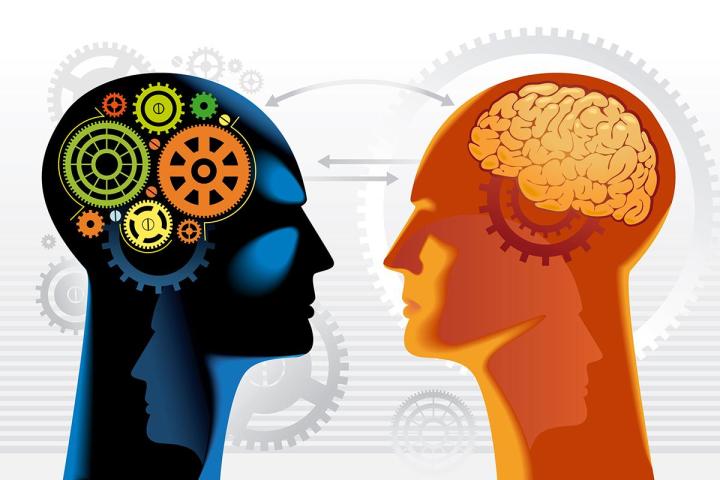
The PoetiX challenge asked programmers to create software that can write a sonnet based on a single noun or noun phrase prompt. The best of these algorithms were then entered into the PoetiX Turing Test, which pitted them against human poets, and asked a panel of judges to determine which of the sonnets were written by man and which we written by a machine.
Before we dive into the poems, let’s discuss why the competition is held in the first place and why exactly the role of poet isn’t an easy one for AI to undertake.
Dan Rockmore is the director of the Neukom Institute for Computational Science at Dartmouth College. Although he hopes participants have fun at PoetiX, he told Digital Trends the ultimate goal is to “inspire outstanding work” in the field AI and algorithmic narrative generation.
“I’m sure one can dream up various ‘practical’ uses of such work, but that isn’t really on our minds,” Rockmore said. “Personally, I’m more interested in the exploration of the fuzzy fractal boundary between human and machine intelligences (which are different) and how they work together as well as the attendant implications or even revelations regarding the creative process.”
That’s no easy task. AI really struggle at telling compelling stories. As Rockmore put it, “Narrative is complicated!” He pointed out how NPR’s Robert Siegel (who judged the competition) said the softwares’ sonnets lacked intent, even though they followed the rules. “That’s narrative,” Rockmore said. “To think about it from a generative point of view, a rule set is either too abstract (e.g. Aristotle’s Poetics) or way too detailed. From a training perspective, it’s not yet clear to me what you would extract from a huge set of exemplars.”
Siegel’s response hints at the fact that each of the judges could pinpoint the software-written sonnets, as NPR’s All Tech Considered reported. How do you think you’d do? Only one of the sonnets below was written by an algorithm…
Sonnet #1
A green nub pushes up from moist, dark soil.
Three weeks without stirring, now without strife
From the unknown depths of a thumbpot life
In patient rhythm slides forth without turmoil,
A tiny green thing poking through its sheath.
Shall I see the world? Yes, it is bright.
Silent and slow it stretches for the light
And opens, uncurling, above and beneath.
The sun warms it and with a little time
Another slight leaf joins its neighbor,
They crown slowly and birth without labor
Feeding on the air’s breath like a rhyme.
How can we know with body and with brain,
The force that makes the earth suck up the rain.
Sonnet #2
The dirty rusty wooden dresser drawer.
A couple million people wearing drawers,
Or looking through a lonely oven door,
Flowers covered under marble floors.
And lying sleeping on an open bed.
And I remember having started tripping,
Or any angel hanging overhead,
Without another cup of coffee dripping.
Surrounded by a pretty little sergeant,
Another morning at an early crawl.
And from the other side of my apartment,
An empty room behind the inner wall.
A thousand pictures on the kitchen floor,
Talked about a hundred years or more.
Sonnet #3
And what if from distress comes something fine,
And following this dress-rehearsal pain
Gives way to Joy, mistress of ardor, art,
And love, who sure this mess would straighten out?
For Joy has no illusions of a break;
She brooks many ill fusions of extremes,
And shares her light ‘till few suns could compete;
Her binding love makes twos ones and keeps peace.
So best not make a strumpet of this Joy,
Assert that she pays some debt with her smile,
Or name to her a numb set of stale sparks;
She never has succumbed yet, bless her heart.
Her love is full and indiscriminate
And even so you’ll find no sin in it.
Answers below:
If you guessed number one or three, you’ve been fooled. Number one was written by a human named Ivy Schweitzer and number three was written by a human named Kurtis Hessel. The second sonnet, however, was written by an algorithm that was programmed by Marjan Ghazvininejad, Xing Shi, Yejin Choi, and Kevin Knight from the University of Southern California Information Sciences Institute.
I asked Rockmore whether he envisages AI one day meeting human standards for creative narrative arts. Rockmore suggested my question may have been confused. “[There] is a moving and sometimes subtle (sometimes not) machine influence in the creation of literary art, so that the standard changes in time and across cultures,” he said.
“So, if the ‘average’ literary artist was heavily machine-aided, then [my] answer might be yes,” he continued. “Of course, we’re not at that point in time and may never be. On the other hand, if you mean judged against the average literary artist of today, the answer is not for a while, for sure, but for particular forms of literary art (e.g., the sonnet), maybe…”
Editors' Recommendations
- YouTube tells creators to start labeling ‘realistic’ AI content
- MIT’s latest artificial intelligence can rewrite outdated Wikipedia pages
- Mind-reading A.I. analyzes your brain waves to guess what video you’re watching
- A.I. can remove distortions from underwater photos, streamlining ocean research
- New cardiology A.I. knows if you’ll die soon. Doctors can’t explain how it works


